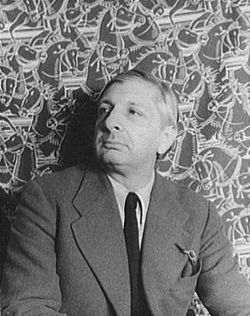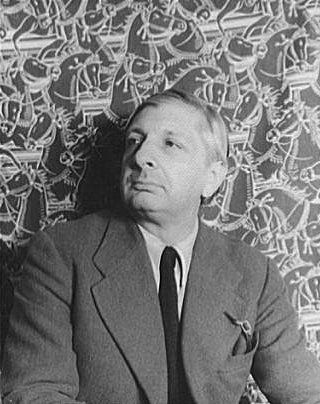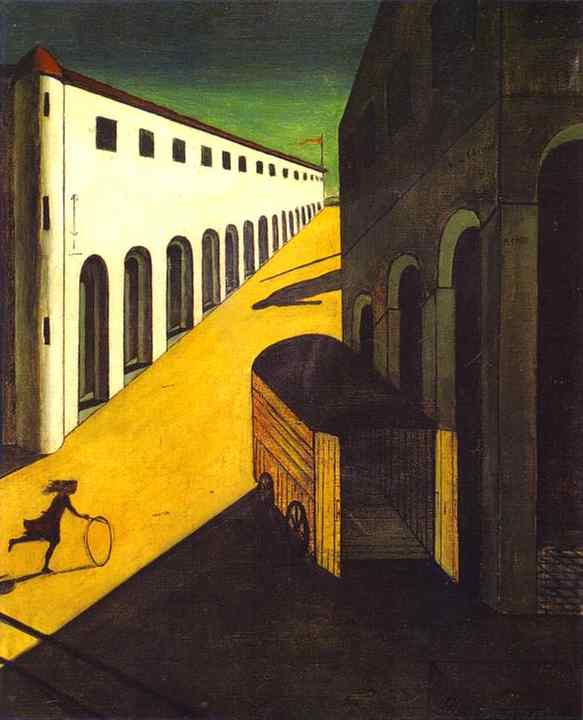Artist. An outstanding Italian modernist, he did his most significant work between 1910 and 1920. A typical De Chirico painting of this period depicts a large city square, empty except for a statue and one or two faceless human figures. A lonely and even menacing atmosphere is evoked through combinations of bright light, deep shadows, and exaggerated perspectives. These mysterious cityscapes had a profound influence on the Surrealists, though De Chirico was never considered a member of that movement. Among his celebrated canvases are "The Enigma of the Hour" (1911), "Nostalgia of the Infinite" (1913), "Piazza d'Italia" (1913), "Mystery and Melancholy of a Street" (1914), "Love Song" (1914), "The Disquieting Muses" (1916), and "Hector and Andromache" (1917). He also published an experimental novel, "Hebdomeros" (1929). De Chirico was born to Italian parents in Volos, Greece, and studied in Athens, Florence, and Munich. In 1911 he moved to Paris, where his first champion was poet and critic Guillaume Apollinaire. During World War I he served as an Italian Army medic in Ferrara and founded the short-lived "Metaphysical School" of painting with Carlo Carra. Historians agree that De Chirico put his best work behind him in the 1920s, when he repudiated his artistic past and turned to a more conventional, even academic manner. He would paint for another six decades, but as far as the art world was concerned the original, vital De Chirico did not survive the post-WWI era. Surrealist Max Ernst described his unflatteringly realistic nude self-portrait (1945) as that of "a ruin who was once a genius." This general view made him bitter and in later years he avenged himself by flooding the market with backdated self-forgeries, simultaneously parodying and cashing in on the signature 1910s style he had stopped believing in. The mockery is exemplified in the painting "The Return of Ulysses" (1968). But neither his long eclipse nor his creative hooliganism can detract from the brilliance of his youthful vision, or the impact he had on artists of his generation and beyond.
Artist. An outstanding Italian modernist, he did his most significant work between 1910 and 1920. A typical De Chirico painting of this period depicts a large city square, empty except for a statue and one or two faceless human figures. A lonely and even menacing atmosphere is evoked through combinations of bright light, deep shadows, and exaggerated perspectives. These mysterious cityscapes had a profound influence on the Surrealists, though De Chirico was never considered a member of that movement. Among his celebrated canvases are "The Enigma of the Hour" (1911), "Nostalgia of the Infinite" (1913), "Piazza d'Italia" (1913), "Mystery and Melancholy of a Street" (1914), "Love Song" (1914), "The Disquieting Muses" (1916), and "Hector and Andromache" (1917). He also published an experimental novel, "Hebdomeros" (1929). De Chirico was born to Italian parents in Volos, Greece, and studied in Athens, Florence, and Munich. In 1911 he moved to Paris, where his first champion was poet and critic Guillaume Apollinaire. During World War I he served as an Italian Army medic in Ferrara and founded the short-lived "Metaphysical School" of painting with Carlo Carra. Historians agree that De Chirico put his best work behind him in the 1920s, when he repudiated his artistic past and turned to a more conventional, even academic manner. He would paint for another six decades, but as far as the art world was concerned the original, vital De Chirico did not survive the post-WWI era. Surrealist Max Ernst described his unflatteringly realistic nude self-portrait (1945) as that of "a ruin who was once a genius." This general view made him bitter and in later years he avenged himself by flooding the market with backdated self-forgeries, simultaneously parodying and cashing in on the signature 1910s style he had stopped believing in. The mockery is exemplified in the painting "The Return of Ulysses" (1968). But neither his long eclipse nor his creative hooliganism can detract from the brilliance of his youthful vision, or the impact he had on artists of his generation and beyond.
Bio by: Bobb Edwards
Inscription
"PICTOR OPTIMUS"
Advertisement



